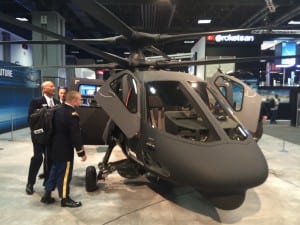
Sikorsky [UTX] has paused flight testing on its experimental coaxial-rotor S-97 Raider to focus on operation of its ground-test station.The first S-97, which incorporates dual rotors and an aft pusher prop to achieve helicopter hover capabilities and fast flight like an airplane, has flown just 2.2 hours during two flights since its first flight in May.The same aircraft has undergone 47 hours of tethered ground testing while the ground test station, which is a skeletonized terrestrial test bed for the…

 By
By 











